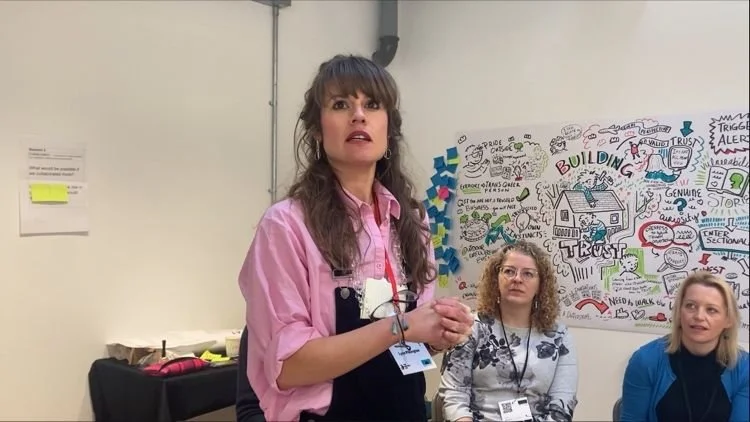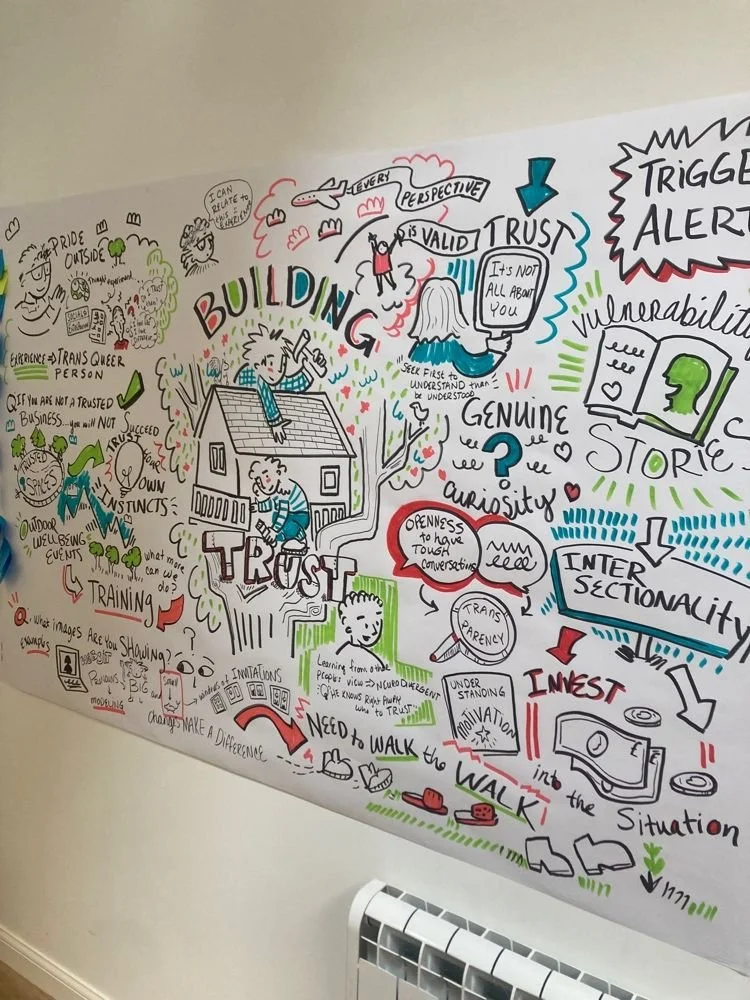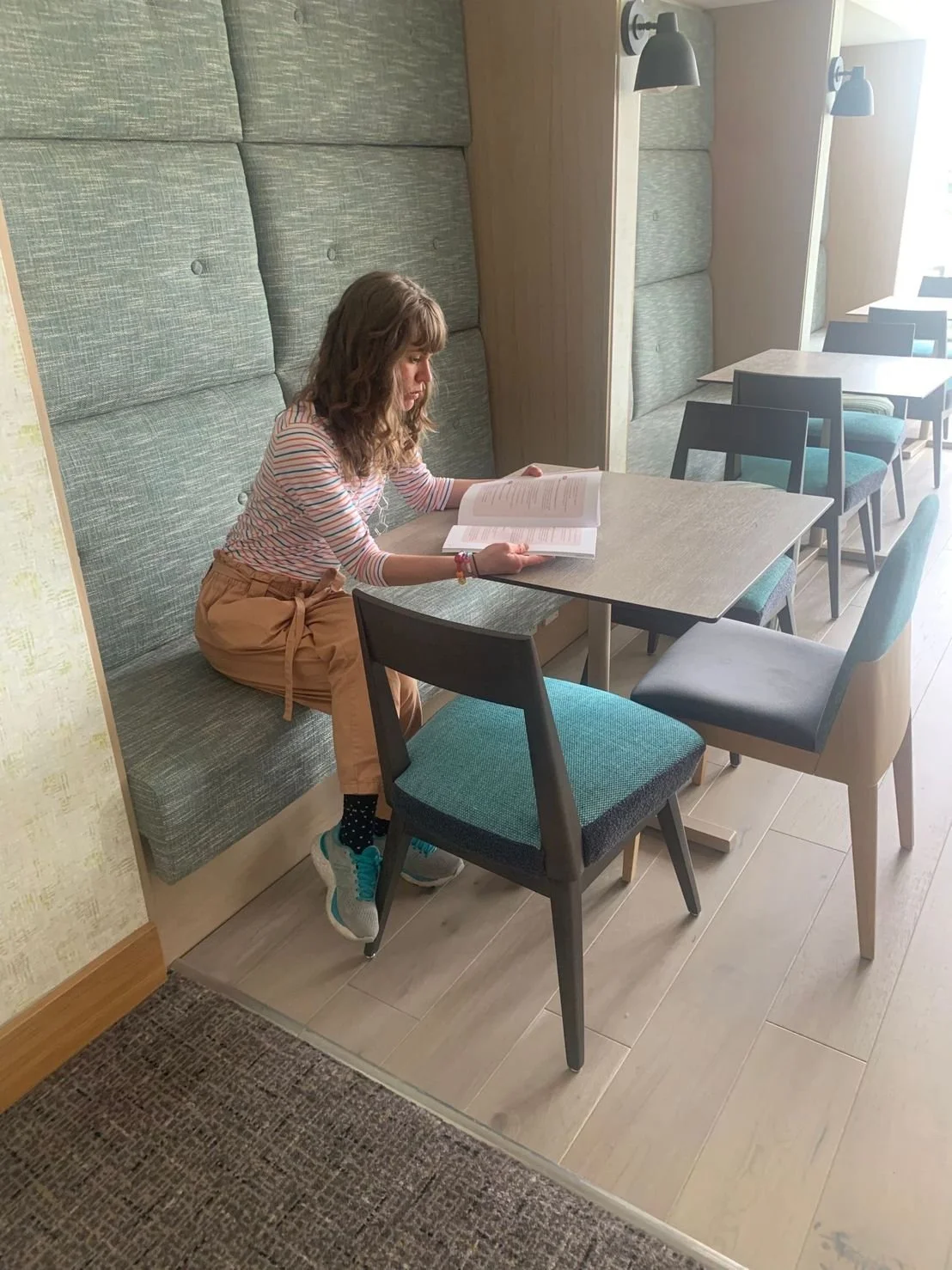Collaboration - It’s Not the Who, It’s the How.
I don’t like people.
As in, I don’t like it when people say the generic, ‘we collaborate with people’.
Who? Surely you collaborate with individuals who are passionate about things? Individuals that are not simply part of a homogenous group?
But, let’s look beyond the people. When speaking about collaboration, as I did recently at The Melting Pot Bridging Communities event, I focused on the how of collaboration rather than the who.
Collaboration, to me, involves looking beyond the people we know.
Throughout my squiggly, colourful career, I’ve worked with all sorts of ‘people’, including volunteers, students, children with additional support needs, senior leaders and politicians. I’ve collaborated about strategic plans, mental health projects, consultations and arts and crafts.
For all these humans, the principles of how I collaborate has stayed the same.
The theme that connect them is inclusion - collaborating with the seldom heard. Collaboration, to me, involves looking beyond the people we know and saying, ‘who have we not heard?’.
As someone who is neurodivergent, I’ve spent a lot of time feeling excluded, whether from mainstream education, employment or even just social groups. My mission is to create a more inclusive world where collaboration with those who are different to the norm feel seen and heard. I do this through the various projects I’ve been a part of (fancy doing a project with me in future? You can take a look at through my training, speaking and consulting pages. We should probably work together).
To illustrate my principles of how to collaborate, let me bring it to life with three examples of collaboration I’ve been a part of.
True collaboration here meant creating a psychologically safe place to have disagreement.
Firstly, when working full time in equalities at a college, I was leading on the involvement stage of setting Equality Outcomes. That means that we needed to collaborate with the minority groups who were the subject of the inclusion goals that we were setting. I was part of an Advisory and Engagement group which had members from across all protected characteristics. They acted as ‘critical friends’. True collaboration here meant creating a psychologically safe place to have disagreement.
We wanted to hear from those with different agendas so we could make the best informed outcomes looking at the evidence. It can be challenging to collaborate when you have limited resources and competing priorities, but ultimately better collaboration comes from having compassion for an alternative viewpoint. It comes from, ‘I hear you, we may not be able to prioritise it right now, but here’s how we will maintain a fruitful relationship’. Managing expectations is crucial when working together in this way, as well as working 1-2-1 to build trusting relationships.
Use shared language and see everyone as equals.
Another example of collaboration would be a recent project in which I was Co Chair for an Early Intervention in Psychosis Expert Reference Group. This project explored the benefits of supporting people with psychosis in a wrap-around way for them and their carers. From delivering Scottish Mental Health First Aid, I know that this condition is highly misunderstood and outcomes are poor. This project saw cross-disciplinary collaboration between mental health professionals, those with lived experience and those working in health improvement to share best practice about improving outcomes. By chairing the group in a non-judgemental way where everyone, no matter their title, could contribute, we saw meaningful collaboration. We had principles for online inclusion that were applicable to everyone. We used shared language e.g. service user vs patient vs client. We all brought passion for the project, fuelling hope even with limited funding.
Sit on the floor and get out your Sharpies.
And, lastly, an example from my work with children with additional support needs. I’ve been working 1-2-1 on behaviour plans with children who sometimes struggle with violence, self-harm or aggression. There’s a form template to fill out that considers triggers, regulation strategies and impact on others. These children just glaze over when they hear that another professional needs to fill out a form. To collaborate with them on this, I brought in a big cushion to sit on with them, A3 paper and Sharpies to draw with and sat on the floor with a snack and drew mind maps. I never want to be another nameless ‘professional with a clipboard’ to them, or anyone.
I checked with them what time suited them, I got to their level, and we drew out answers together.
Children are natural collaborators. I see this everyday through arts and crafts activities, like a couple of weeks ago when I was sitting on the floor drawing a big spring picture and children would come up and just ask, ‘can I help?’. I just got started and they added to the vision… rainbows… a waterfall… tulips…
When you have a vision, get started and people will look to collaborate with you.
Collaboration takes time, effort and energy. It’s so much easier to stay at your desk and listen to voices that agree.
Real collaboration is worth disagreeing over.


